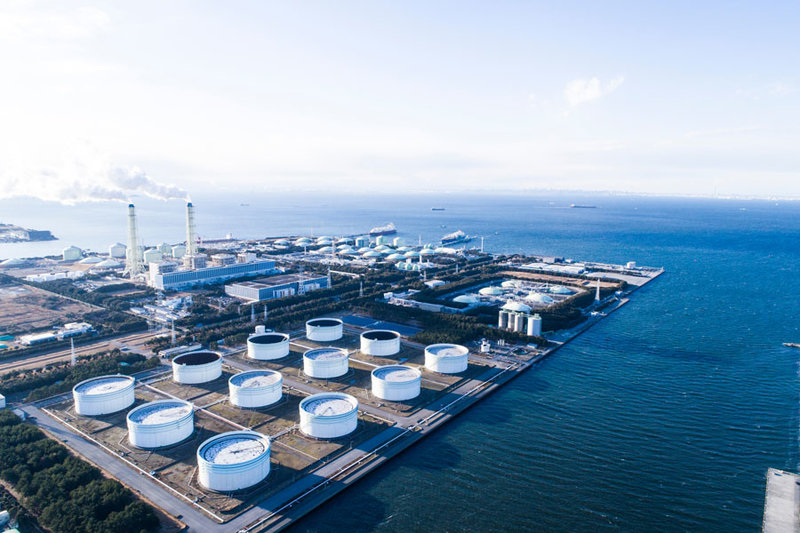Environment
Reducing carbon emissions:
is the shipping sector prepared?
The International Maritime Organization has pledged to reduce carbon emissions from shipping by at least 50% by 2050. But is this goal ambitious enough, or will the sector still struggle to achieve it? Joe Baker finds out
Ever since countries
first pledged to take charge of their carbon footprints as part of the 1997 Kyoto Protocol, the shipping sector has come under increasing scrutiny for its failure to respond to the climate change challenge.
Environmental groups bristled when shipping was omitted from the Paris Agreement in 2015, under which participating countries pledged to limit the global average rise in temperature to ‘well below’ 2°C from 2020. Maritime transport is currently responsible for 2.5% of global emissions, but (if nothing changes) an increase in global trade means this is set to grow by up to 250% by 2050.
But the increase in pressure finally paid off in April, when the International Maritime Organization (IMO) revealed its initial strategy for cutting the industry’s carbon output. IMO member states pledged to reduce greenhouse gas emissions from shipping by at least 50% by the middle of the century, compared to 2008 levels. Based on figures from the same year, the strategy also proposes an objective to reduce average carbon intensity from shipping – the amount of CO2 emitted for each unit of transport – by at least 40% by 2030, and 70% by 2050.
International Chamber of Shipping (ICS) secretary general Peter Hinchliffe called the strategy “a Paris Agreement for shipping” that “sets a very high level of ambition for the future reduction of CO2 emissions”. Leading shipping organisation BIMCO also sang its praises, claiming “the strategy shows that there is only one road ahead, and that is the road towards decarbonisation”.
After years of dragging its heels on climate change, the shipping sector finally has a starting point for cutting carbon emissions. The question now is will it be enough?
Image courtesy of
Is the goal ambitious enough?
Many commentators have said that while the strategy represents a good start, the wording of ‘at least 50%’ will be important, as this target will ultimately need to be scaled up for the industry to align itself fully with the goals of the Paris Agreement. Environmental organisations have claimed that the reduction target for this alignment should be between 70%-100%, similar to what has already been called for by the European Union and Pacific states.
Faig Abbasov is the shipping officer of Transport & Environment (T&E), a member organisation of the Clean Shipping Coalition. He says that although the target is lacking, the strategy does demonstrate a commitment to reduction of ‘absolute’ emissions, rather than offset measures that don’t solve the problem in the long term. Such a process is currently ongoing for airlines under the Carbon Offsetting and Reduction Scheme for International Aviation (CORSIA).
Environmental organisations have claimed that the reduction target for this alignment should be between 70%-100%
While the aviation industry is still searching for ways to make air travel greener, Abbasov says this is not the case in the shipping industry. A report published by the International Transport Forum (ITF) ahead of the IMO strategy announcement found that the industry could achieve up to 95% decarbonisation as early as 2035 through the “maximum deployment of currently known technologies”.
“Shipping has an advantage in the sense that ships can be retrofitted with new alternatives,” he says. “Its maintenance cycle is usually five years, and within that ships can be retrofitted with zero-emission alternatives – batteries, fuel cells or new tanks for ammonia for example – so we don’t have to wait for the change of the entire fleet.”

Image courtesy of
Svein Kleven is senior vice president of engineering and technology for Rolls-Royce. Image courtesy of Rolls-Royce
Retrofitting ships with zero-carbon technologies
Even if the IMO strategy could have gone further, the achievability of the 50% goal will still depend on a mass change in the industry. Ships will need to be more energy-efficient, and the transition towards low and zero-carbon fuels will need to commence as soon as possible.
The IMO’s initial strategy contains a list of candidate measures that countries and shipowners could be bound by in the future. These extend from short-term measures, including the revision of its Energy Efficiency Design Index (EEDI), to medium and long-term measures, which include the development and provision of zero-carbon fuels. However, the organisation still needs to prioritise and decide on which measures to follow up on ahead of its next Marine Environment Protection Committee meeting, slated for October.
Environmental organisations argue that shipping companies need to start work now to cut emissions. Retrofitting existing ships with zero-carbon technologies and finding alternate fuel sources will be key, as new greener ship designs will take time to emerge. The ITF claims that vessels sporting more slender hull designs are shown to have lower fuel consumption, which could lead to 10%-15% savings at lower speeds and up to 25% at higher speeds. Nevertheless, with the average age of today’s shipping fleet at 25 years and rules for energy efficiency currently set to change in 2030, this will still be a way off.
“Most of the new ships built in the 2030s will have to be zero-emission already,” says Abbasov. “Otherwise there is no way to meet the 2050 target, even without it being ratcheted up.”
The ITF has put forward a number of potential upgrades for ships, such as fitting ship bows with bulbous extensions below the water line to reduce drag, or painting hulls with low-friction coatings. However, implementing greener fuel sources is ultimately set to have the biggest impact.
Under a new IMO regulation due to come into force in 2020, fuel oil used on board ships must emit sulphur levels no higher than 0.50% m/m (mass by mass). Shipowners have therefore already been looking to a variety of alternatives, such as low-sulphur fuels, liquefied natural gas (LNG), hydrogen, lithium-ion batteries, and renewable energy sources such as wind power.
Retrofitting existing ships with zero-carbon technologies and finding alternate fuel sources will be key
Nevertheless, the availability of fuels is still a major cause for concern. In May, the ICS revealed that maritime trade could be “dangerously impeded” by the lack of availability of low-sulphur fuel in ports around the world after the regulation date. For Abbasov, the supply and demand issue revolving around greener fuels still presents a ‘chicken and egg’ scenario for the industry.
“For the shipping industry to start using those zero-emission fuels or batteries you need to have supply, but you will not have supply unless there is demand, so which one comes first? That’s a really difficult problem,” he says.
One concern is that a boom in LNG-powered ships currently being seen in Europe may reduce sulphur content in ships, but does not lead to a substantial enough reduction in CO2 for it to be a sustainable method in the future. Abbasov says that the industry needs to be educated on the fact that from a CO2 point of view, LNG isn’t the answer.
“Even if you switch the entire fleet to LNG the difference to business as usual [levels of CO2] would be a maximum of 15%,” he says. “If we have to switch around 60% of the global fleet to LNG, we'd need around $100bn to $250bn worth of LNG infrastructure, which will become stranded assets in the next 10-15 years. That’s a risk for the governments, because for most of them LNG infrastructure will be subsidised with taxpayers’ money.”
If anything is certain, it’s that the IMO will need to prioritise research and development in the short term if the sector has any hope of meeting its decarbonisation ambition.
“Whilst battery and hydrogen cell technology does exist, their current capabilities are not sufficient to become the dominant fuels of the industry at this time,” said UK Chamber of Shipping CEO Guy Platten. “Research and development is now required on a massive scale.”

Image courtesy of
Slow steaming and carbon pricing: the best options?
Abbasov believes that the most effective operational measure available to shipping at this stage is slow steaming – the practice of operating ships at lower speeds. T&E analysis has shown that if shipping companies slow down half of their fleet by 30%, they would cut CO2 emissions by around 200 megatonnes every year, at a negligible cost. However, enforcing this speed reduction will again require additional pressure from the IMO.
“You will need to have alternative compliance mechanisms, meaning that if ships don’t want to slow down for any reason, they would have to implement alternative measures that would deliver equivalent reductions – for example, wind propulsion – to reduce their emissions,” says Abbasov.
Carbon pricing should be in the region of $500 per tonne of CO2 to make zero-emission fuels and technologies competitive
T&E has also highlighted that carbon pricing – the umbrella term for taxes and levies based on emissions – could be a major incentive to shipowners to clean up their act. The organisation claims that carbon pricing should be in the region of $500 per tonne of CO2 to make zero-emission fuels and technologies competitive.
Abbasov says it would take many years to develop a framework for carbon pricing that will be high enough to incentivise the industry. One of the reasons is that such a mechanism should not disproportionally impact the economies of developing countries, many of which export heavy goods that ramp up emissions. For this reason, short-term measures that can be easily adopted (such as slow steaming) should be the IMO’s main goal.
The IMO’s initial strategy has presented a clear call to action to the industry – and one that is well overdue. Nevertheless, many challenges lie ahead, and industry spectators will be keeping a close eye on whether shipping is on course to meet its commitments.